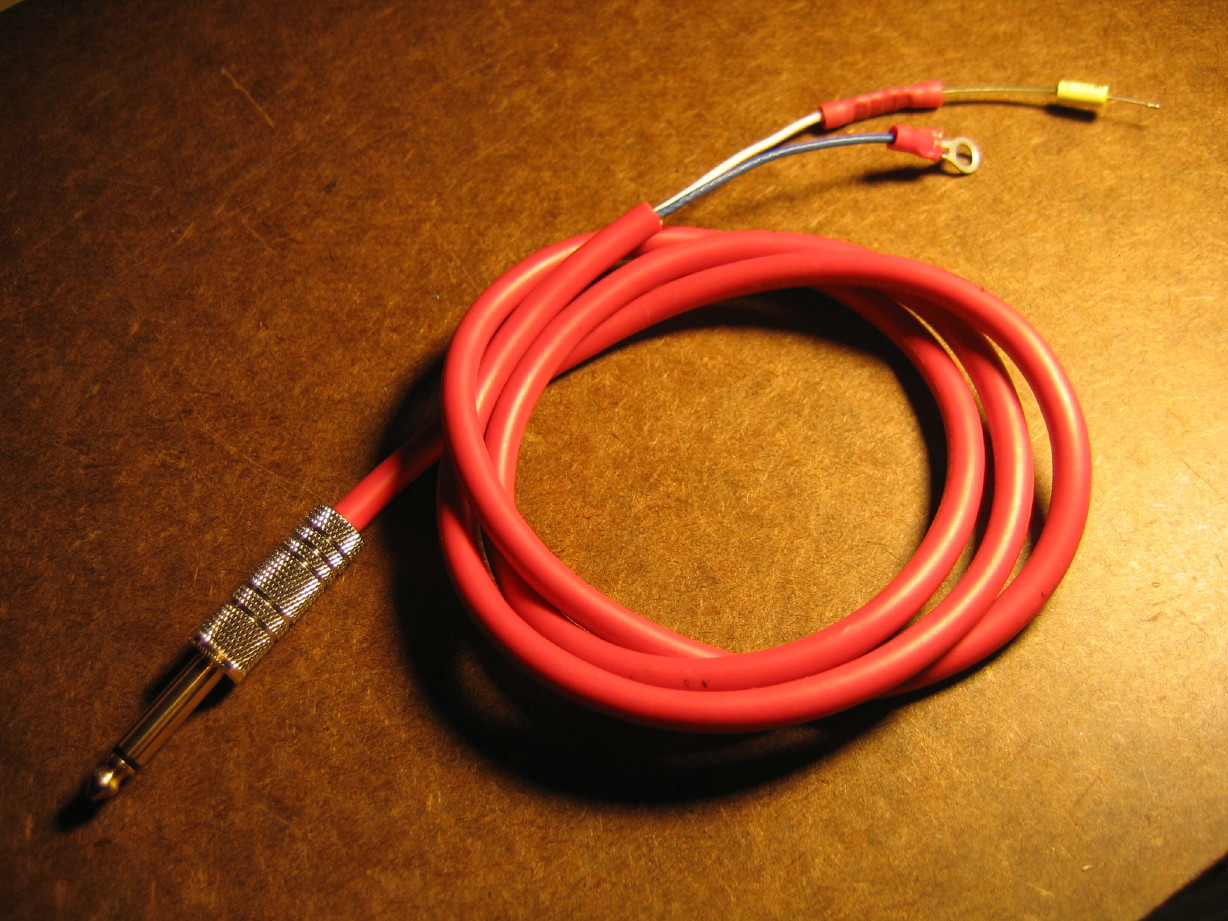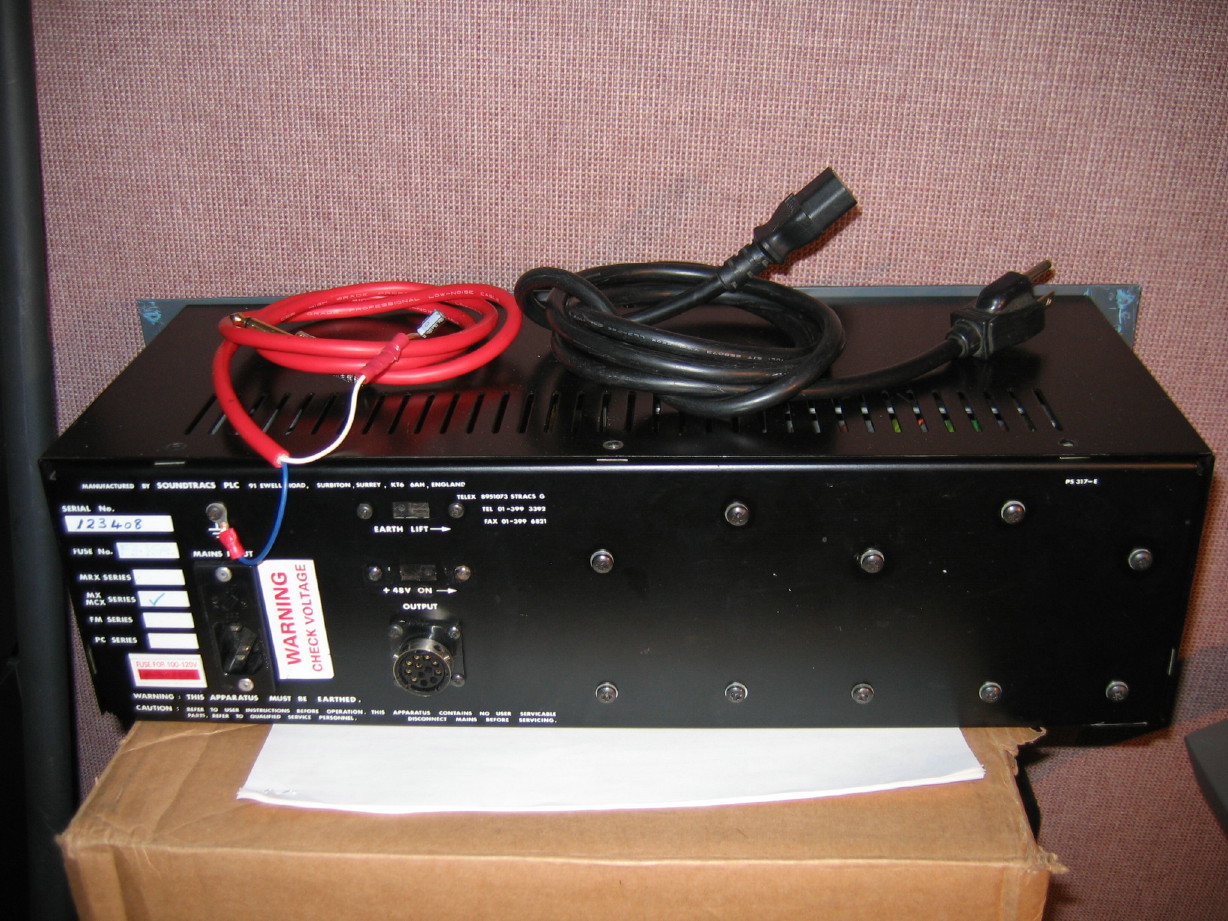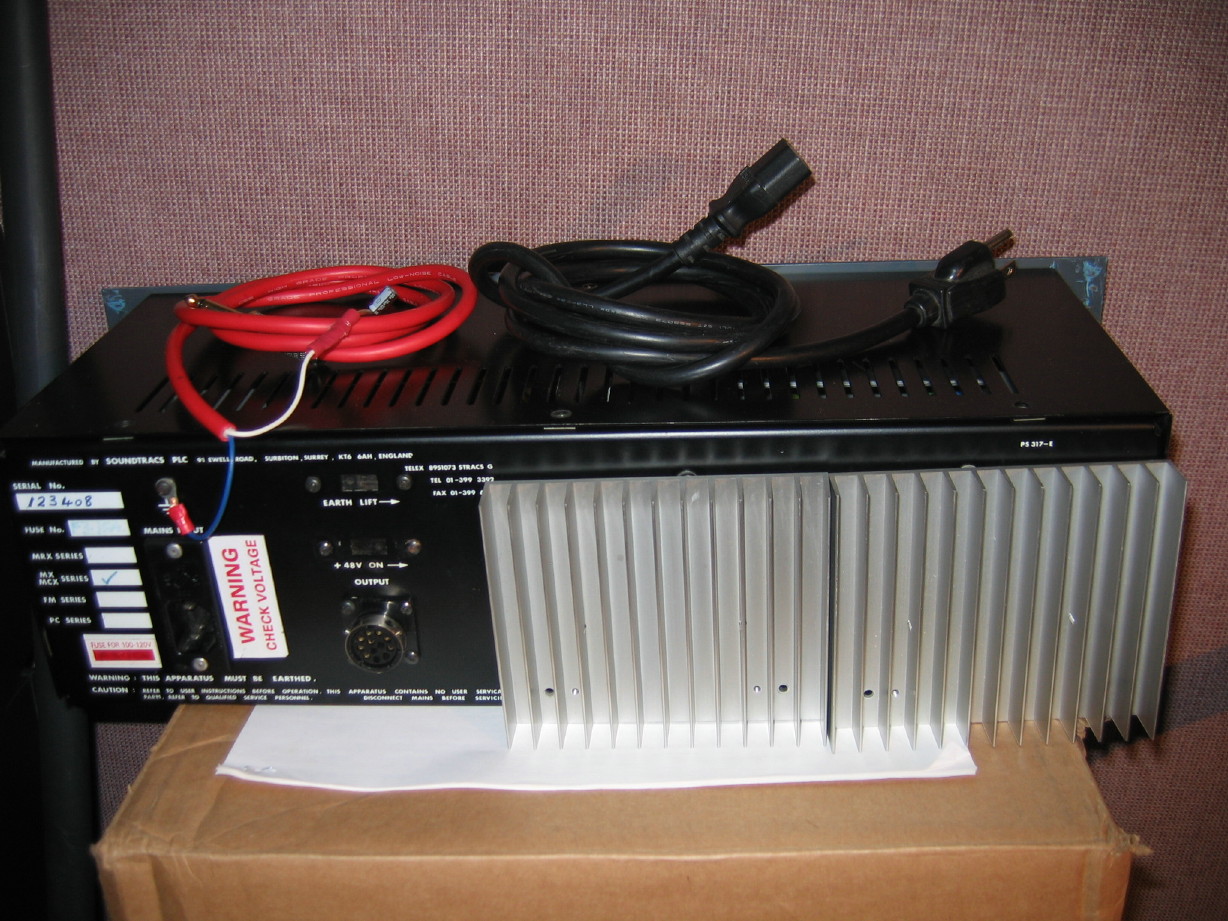sweetbeats
Reel deep thoughts...
So am I getting this right?
See the cable I made up to FFT the power rails...I've got a TS jack at one end with the braided copper shield of the cable and the blue conductor connected to the shield of the connector, and the white conductor is connected to the tip. At the other end the braided copper cable shield is unterminated, the blue conductor has a ring crimp on it so I can connect that to the Soundtracs PSU chassis, and the white conductor has a 0.1uF/100V film cap for a tail...THAT will connect with each DC rail one at a time for analysis. The TS plug will go into a line input on my Presonus Digimax FS. Is this correct?

BTW, I got all the units patched and configured so that the input path is:
Digimax FS line input --> ADC --> ADAT Lightpipe --> Yamaha i88x --> mLAN firewire --> Yamaha 01X --> mLAN firewire --> i88x --> S/PDIF --> Tascam US-224 --> True RTA
I'd love to avoid the whole big giant loop just to get the input to True RTA, but I can't go direct from an i88x input (analog or digital) direct to the S/PDIF output...it doesn't patch that way, and another issue is that because True RTA doesn't work with ASIO audio drivers it has to be WDM and the Yamaha stuff is ASIO only for outputs to the PC...so I have to use the US-224 as the "soundcard" for Windows as it supports WDM in and out. I *think* the US-224 is too noisy for proper analysis to go direct to it...I suppose I should test that. How do I dummy-load an unbalanced input?
I suppose I could also just use an i88x line input and avoid a couple steps and I might try that too because there is (in my estimation) quite a bit of noise in my path, though I didn't have the input terminated on the Digimax FS. Below is a screenshot of the unterminated input via the path described above...the two lower bands were bouncing around quite a bit...not sure what that means. I'm thinking I need to get a purchased copy of True RTA...1 octave is just not cutting it...
So, please:
See the cable I made up to FFT the power rails...I've got a TS jack at one end with the braided copper shield of the cable and the blue conductor connected to the shield of the connector, and the white conductor is connected to the tip. At the other end the braided copper cable shield is unterminated, the blue conductor has a ring crimp on it so I can connect that to the Soundtracs PSU chassis, and the white conductor has a 0.1uF/100V film cap for a tail...THAT will connect with each DC rail one at a time for analysis. The TS plug will go into a line input on my Presonus Digimax FS. Is this correct?

BTW, I got all the units patched and configured so that the input path is:
Digimax FS line input --> ADC --> ADAT Lightpipe --> Yamaha i88x --> mLAN firewire --> Yamaha 01X --> mLAN firewire --> i88x --> S/PDIF --> Tascam US-224 --> True RTA
I'd love to avoid the whole big giant loop just to get the input to True RTA, but I can't go direct from an i88x input (analog or digital) direct to the S/PDIF output...it doesn't patch that way, and another issue is that because True RTA doesn't work with ASIO audio drivers it has to be WDM and the Yamaha stuff is ASIO only for outputs to the PC...so I have to use the US-224 as the "soundcard" for Windows as it supports WDM in and out. I *think* the US-224 is too noisy for proper analysis to go direct to it...I suppose I should test that. How do I dummy-load an unbalanced input?
I suppose I could also just use an i88x line input and avoid a couple steps and I might try that too because there is (in my estimation) quite a bit of noise in my path, though I didn't have the input terminated on the Digimax FS. Below is a screenshot of the unterminated input via the path described above...the two lower bands were bouncing around quite a bit...not sure what that means. I'm thinking I need to get a purchased copy of True RTA...1 octave is just not cutting it...
So, please:
- Look at my cable and my description above of how I intend to use it...do I have it right?
- Comments on my input path are most welcome...
- How do I load an unbalanced input?
- What do you make of the screenshot below? Is the noise floor too high to do an effective analysis of the power supply rails?


 No sweat. I understand.
No sweat. I understand./unterminated_input.jpg)
/+48VDC.jpg)
/+24VDC.jpg)
/+17VDC.jpg)
/-17VDC.jpg)

/terminated_input_PSU_off.jpg)
/-10dBu_300Hz_sine_wave.jpg)
/+48VDC_rail.jpg)
/+24VDC_rail.jpg)
/+17VDC_rail.jpg)
/-17VDC_rail.jpg)

/unterminated%20line%20level%20input.jpg)
/terminated%20line%20level%20input%20to%20psu,%20psu%20off.jpg)
/+48VDC%20rail.jpg)
/+24VDC%20rail.jpg)
/+17VDC%20rail.jpg)
/-17VDC%20rail.jpg)
/32ch's%20open,%20main%20out.jpg)
/32ch's%208gp's%20open.jpg)

